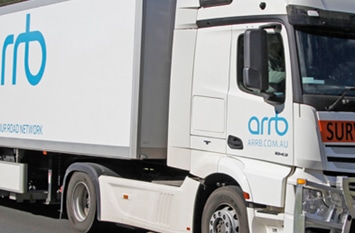As part of a new ALGA News segment, we sat down with Australian Road Research Board (ARRB) boss Michael Caltabiano to discuss Australia’s flood and rain-damaged roads and the need for an urgent rethink of road construction, maintenance and to embrace new technologies.
ALGA: Can you tell us about the shocking state of Australia’s local roads and how we can better manage this $3.8 billion problem?
Michael Caltabiano (MC): As we’ve seen over the past 12 to 24 months, there’s been extensive damage to large parts of Australia’s road system, across several states, from severe flooding and heavy rains.
We believe this provides the opportunity for decision-makers to evolve the way Australia’s roads are constructed and managed. There is no better time than during disaster recovery to think differently and build – rebuild – the damaged infrastructure in a way that is more resilient and more sustainable to withstand future flooding events.
ALGA: We’ve heard of the ‘pothole pandemic’ in Australia – how can we fix this crisis to have more resilient roads?
MC: Moisture is like the kryptonite for roads, and inevitably leads to potholes and extensive road failures. The last two year’s floods and torrential rains have caused catastrophic damage to the road systems that connect communities and deliver freight.
Standards and materials used for constructing Australia’s road systems have to change to improve water resistance and enable a quicker recovery after significant rainfall events. Now is the time to act and look at what innovations are possible so we can prevent a repeat of this infrastructure emergency in the future. At ARRB, we have completed the research component of new and next generation materials to fulfill this role and now is the time to partner with Local Governments across Australia to implement a step change.
ALGA: What are some of the game-changing sustainability solutions being trialled and used in Australia?
MC: We’ve got some of the smartest road technology in the world here in Australia. Our research shows that many recyclables – including tyre rubber – are not only eco-friendly but will create more durable and resilient road surfaces. By using recycled materials that have better resistance to cracking hence reduce the incidence of moisture ingress in roads, we can ensure that fewer potholes and road failures occur.
This will also improve the durability of our roads, and reduce the materials we send to landfill which will result in much better environmental outcomes. ARRB recently released a major report which provides an independent, expert review on how to sustainably and successfully increase the use of recycled materials in road and rail infrastructure.
ALGA: New technologies also have a key role to play, so what are some of the options are available to councils?
MC: Using our technology we can measure ride quality and road conditions. ARRB has a suite of state-of-the-art vehicles fitted with lasers and high-tech equipment that measure road conditions at traffic speed, and they help us to find issues with a road before they become apparent.
Our Intelligent Pavement Assessment Vehicle (iPAVE) has lasers and other high-tech equipment and can measure road condition at traffic speed as well as smaller survey vehicles which can be used on unsealed regional roads. These vehicles have recently been equipped to service local government roads that connect communities and connect farm gate to highway or rail head.
The accuracy and resolution of the iPAVE helps engineers to pinpoint areas where the pavement is be subject to failure, allowing councils and road agencies to decide where best to spend their valuable maintenance dollars. The benefits of knowing the right time, right place and right treatment are delivering BCR’s for State Agencies in excess of 10.

ALGA: Considering the ongoing impacts of climate change, how important is it to build back better local infrastructure?
MC: Climate scientists are telling us we need to expect more extreme weather events more often in Australia. For our roads, this means the maintenance schedules need to be modified to reflect the increased risk. It also means the standards that we use for the construction of our road systems need to change to have a resilient focus.
Right now, we are doing the same level of maintenance, when we should be building and maintaining our roads for what we can expect in the future. We are keen to work with more councils to deliver longer lasting solutions, that are going to deliver safer roads for all users.



